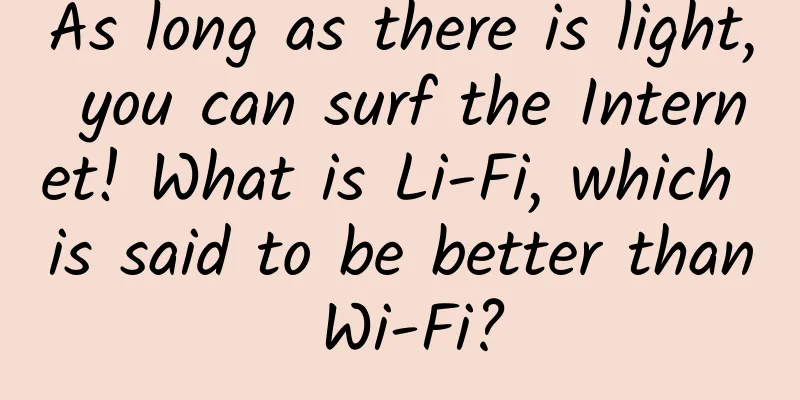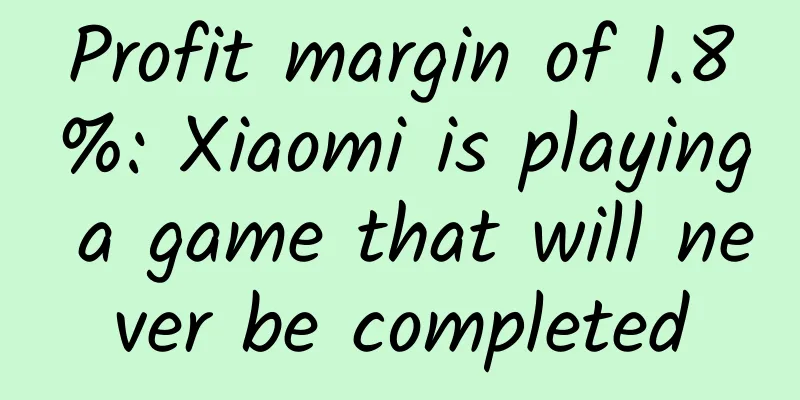As long as there is light, you can surf the Internet! What is Li-Fi, which is said to be better than Wi-Fi?

|
Even if you have never heard of Li-Fi, you now know what it is. Li-Fi (Light Fidelity) is a new wireless network connection technology that mainly uses the visible light spectrum to achieve wireless data transmission. This exciting technology first appeared in a speech by Professor Harold Hass in 2011. At this year's MWC World Mobile Communications Conference in Barcelona, Spain, PureLi-Fi showed us the actual product of Li-Fi. So what is the difference between it and Wi-Fi? Let's take a look.
Harald Burchardt, network chief operating officer of PureLi-Fi, said in an interview with the media: "The working principle of Li-Fi is actually very simple. We use LED lights to transmit wireless signals. It is a bit similar to Wi-Fi, but we use lighting media such as LED lights to complete wireless data communication." It is understood that Professor Harold Hass has been researching Li-Fi technology since 2003 because he foresaw the upcoming spectrum crisis. Around the same time, new LED light source technology began to hit the market, so Professor Harold Hass came up with the idea of combining them. Eventually, he found a way to use these electronic lighting components to achieve high-speed data transmission without interfering with the existing radio frequency infrastructure. Founded in 2012, PureLi-Fi's main purpose is to commercialize the Li-Fi technology. The actual product they displayed was a USB-shaped adapter with a light and infrared lens-like receiver for receiving light signals. In addition, Li-Fi-compatible LED lights and transmitters for transmitting wireless data were also set up above the booth. According to Digital Trends, the data transmission speed of this product reached 40Mbps at the MWC conference, and it was able to achieve very strong stability under direct light, while the speed would decrease at the edges of the light. Thanks to the reflective nature of the light, there was no problem connecting the device, and walking back and forth did not affect its use. Harald Burchardt pointed out that this Li-Fi technology has two key advantages: it can transmit more data in a local area and it is also more secure. He explained: "In a Li-Fi environment, the total data capacity will be increased, and light cannot pass through walls, so the network we create will be more secure than Wi-Fi." In addition, Harald Burchardt also said: "As this technology matures, we hope that the ideal situation will be to reduce the size of this product, build it into an integrated circuit module, and then use it in smartphones, tablets, laptops, wearable devices and other types of electronic devices." However, Harald Burchardt finally admitted that although this technology is promising, it will take 10 to 15 years for it to appear in every LED lamp or every electronic device. What PureLi-Fi has to do is to achieve this goal in a shorter period of time. |
>>: Steve Jobs was also very conflicted about whether to bring iTunes to PC
Recommend
18 provinces and cities will see high temperatures, with local temperatures in Hebei, Henan and Shandong exceeding 40°C! Please keep this high temperature weather prevention guide
The Central Meteorological Observatory continued ...
The Earth, our home, is like a steadily beating heart
27.5 million years - this is the length of the Ea...
Are there bacteria that "eat paper" in nature?
When I saw a netizen asking "Are there bacte...
24-hour emergency response丨This round of epidemic has entered the final stage. The death toll from traffic accidents in Ma'anshan, Anhui has increased to 10
Hot News TOP NEWS The current round of epidemic i...
How to quote for SEO website ranking optimization plan?
For SEO website optimization personnel (newbies),...
A detailed practical strategy for public account data operation
Over the years, how many WeChat public accounts h...
Do you still remember China’s “best tasting vaccine”?
On March 26, 1953, the first polio vaccine was su...
ASO optimization experience: Tips for APP keyword optimization
When you’re developing your first product, you ma...
Comparison and forms of advertising on short video platforms such as TikTok
As the hashtag challenge of the short video platf...
Enjoy the holidays, but don’t forget to give your eyes a break!
Enjoy delicious food during the Spring Festival T...
Blizzard! Temperature drops by more than 10℃! The first round of large-scale rain and snow weather in the Year of the Snake has arrived, please be careful when traveling →
Today (February 1) is the fifth day of the Spring...
Which keyboard is better? MacBook Pro vs. Razer Blade
Razer updated its gaming notebook series this yea...
Is Delta still prevalent in China? Are there any new variants? Official response
Recently, the number of newly infected people in ...
Do shared electric bikes appearing on Beijing streets again have a future?
Recently, a group of uniform yellow electric bicy...









